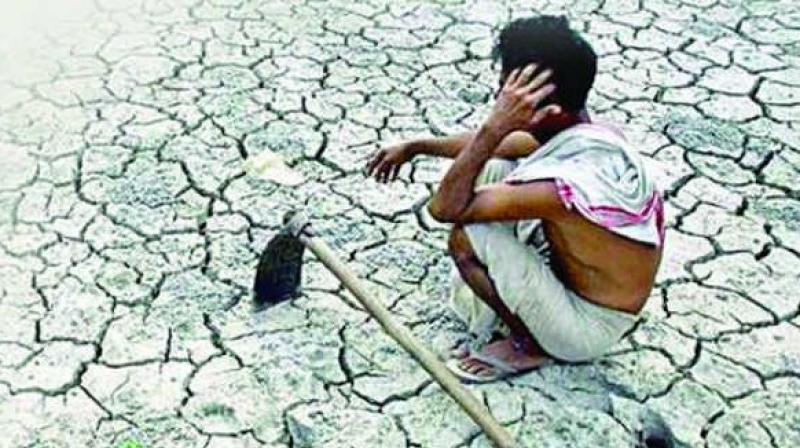Low rainfall: Kerala government gets ready to tackle impact

Kochi, Thiruvananthapuram: Eminent scholar D.D. Kosambi once remarked that it is always worthwhile to do something about the climate than talking about it. The significance of these words is yet to be understood by policy-makers despite ‘climate change’ becoming part of everyday vocabulary. Kerala, the gateway of India’s long winding monsoon season, is faced with the spectre of drought as the rainfall in the state during the South West Monsoon season was down by 34 per cent.
This is probably the first time the State is facing a drought-like situation at this time of the year and the government has drawn up plans to mitigate the condition, especially in the six districts which have been declared drought-hit. Dr. A. Krishna Kumar, scientist at the natural resources and environmental management (NREM) at NCESS which is the former Centre for Earth Science Studies at Thiruvananthapuram, told DC that this early drought was unexpected. He said that instances such as earthworms dying at this time of year was an indication to undertake further study on climatic changes.
“NCESS has got the land base details, but we don’t have atmospheric data on parameters like how much rainfall has been received, details on temperature, humidity etc. We have to take mitigation measures to reduce the intensity of the drought,” said Dr Krishna Kumar. NCESS cannot be blamed for not undertaking any study on atmospheric science as it is conducting a study on climate changes in the Periyar basin. This was started only six months ago but scientists are yet to start generating data. By comparing the land use data collected from the various weather monitoring stations across the State, the scientists would be able to get rainfall data. By collecting the statistics from across the State, they would be able to know the trend on land degradation. But scientists warn that if authorities do not take steps to control the rise in land reclamation, Kerala will face further drought-like situations.
“It is a matter of concern that south-west monsoon was deficit in the state,” said S. Sudevan, director of Indian Meteorological Department at Thiruvananthapuram. “We hope a good spell of north-east monsoon would help partially offset the ill-effect.” In the current scenario, the retreating monsoon is likely to be delayed as there was no sign of it so far, he added. Normally, the north-east monsoon is from the second half of October to early December.
Dr. N.B. Narasimha Prasad, executive director of the Kozhikode-based Centre for Water Resources Development and Management (CWRDM) says that the state will have to long-term planning based on micro and macro level requirements. “The government alone will not be able to find a solution for the conservation and preservation of water in the state,” he said. “The people also needed to be aware of the scarcity of the resource.” He, however, cautioned against reaching a hasty conclusion on drought and said the state may wait for the performance of the north-east monsoon.
While the authorities have failed to take preventive steps such as preservation of rainwater, the government has of late woken up to the sepctre. A recent high level meeting of a team of officials from revenue, irrigation, agriculture, State disaster management cell and local self government bodies called by Chief Minister Pinarayi Vijayan evaluated the conditions. It decided to declare six districts as drought-hit districts and to assess the situation in the others after watching the rainfall in the north-east monsoon.
Agriculture minister V. S. Sunil Kumar told DC that the government had asked the respective department officials to waive off agriculture loans and give moratorium to the farmers in the affected districts. “A mechanism will be brought forth to protect drinking water and water meant for agricultural purposes,” he said. “Also, the rains received from the current north east monsoon would have to be saved for future use as ground water. We have also asked local panchayats to dig canals and ponds in various districts to save water.”

